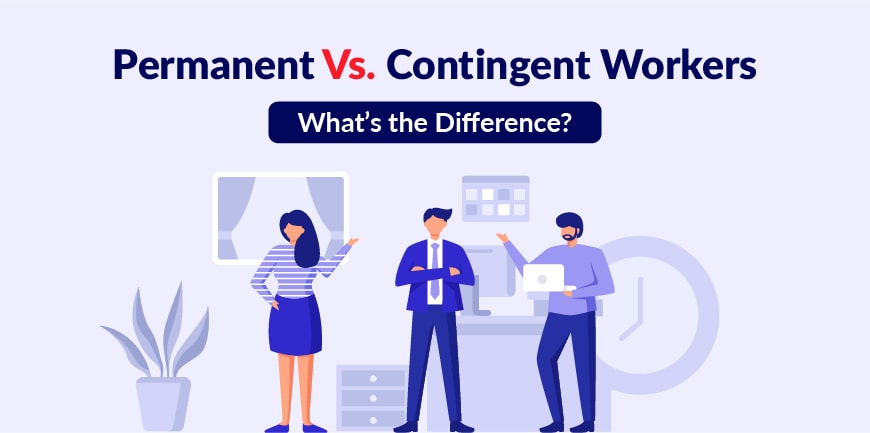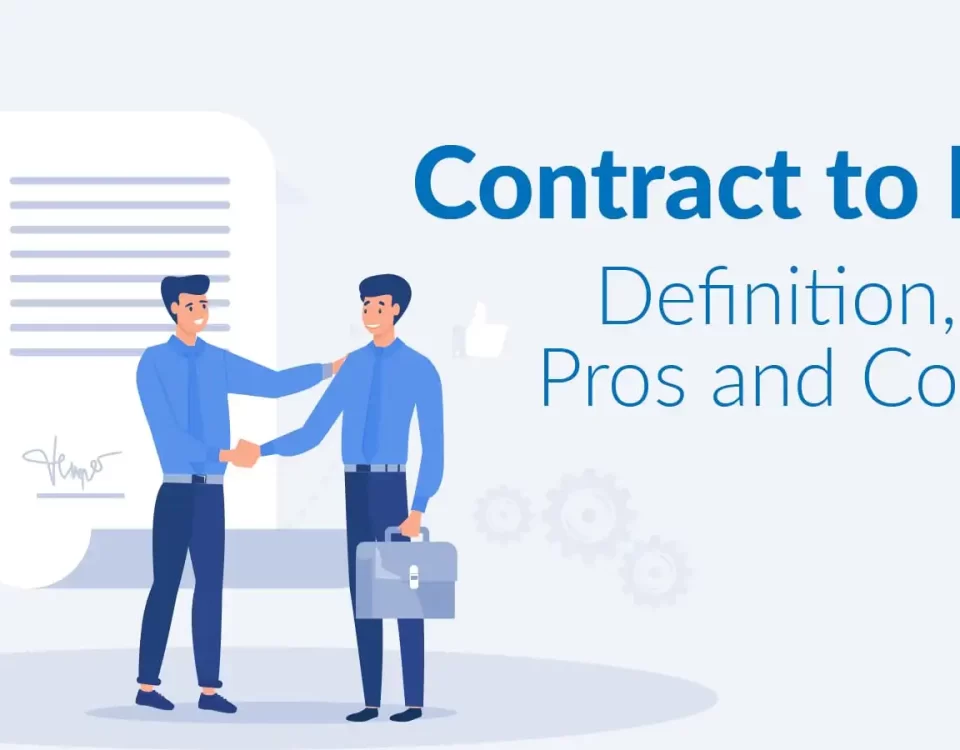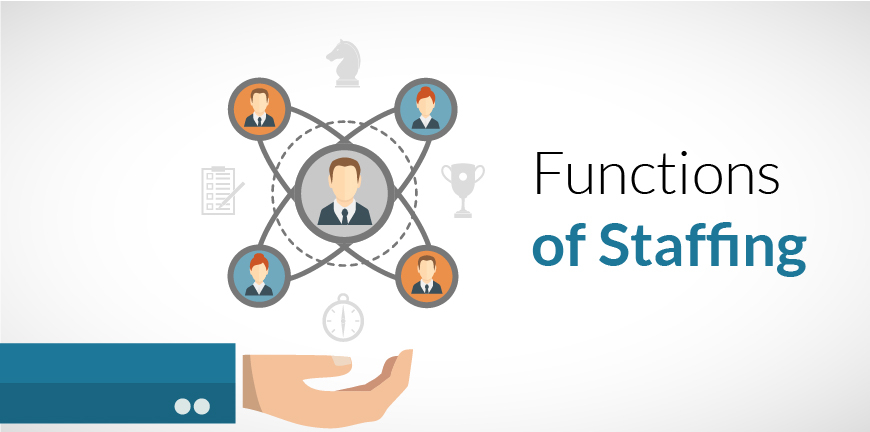
Why Is Human Resource Management Important? Key Factors, Objectives, Benefits, Trends
11/06/2025
How Artificial Intelligence (AI) Can Be Used in Compliance?
12/06/2025- Introduction
- What Are Permanent and Contingent Workers?
- How Do Permanent Workers Differ from Contingent Workers?
- How Do Roles, Flexibility, and Training Compare?
- What Are the Advantages and Disadvantages of Each Workforce Type?
- When Should Companies Use Permanent vs. Contingent Workers?
- Frequently Asked Questions (FAQ’s)
Introduction
Today’s evolving workforce in this altering job market is an exciting and powerful blend of permanent and contingent workers. While permanent workers bring to the table a stable thought process along with institutional expertise, contingent workers like freelancers or consultants bring spontaneity, innovative ideas, and an agile way of working.
The combination of the two can be instrumental in driving business growth and productivity in a fluctuating and uncertain era where companies are moving forward effectively to stay competitive. This judicious mix is the future of a dynamic work culture.
What Are Permanent and Contingent Workers?
Permanent employees are essentially those hired for long-term job roles. These workers are secured in a company and are eligible for benefits and perks while receiving regular salaries. Meanwhile, contingent workers are recruited for temporary positions, which could be a project-based assignment, contractual, freelancing, or through staffing companies. The contingent workers offer organizations flexibility so that they can adapt to changing market scenarios.
How Do Permanent Workers Differ from Contingent Workers?
The vital difference between permanent and contingent workers is permanent employees are essentially those hired for long term job roles. These workers are secured in a company being eligible for benefits and perks along with regular salaries. Meanwhile, contingent workers are recruited for short term positions, could be a project-based assignment, contractual, freelancing or through staffing companies.
Permanent employees are likely to receive comprehensive benefits packages including, medical insurance, paid leave, etc. They have high job security and a direction in terms of career growth within the organization. Due to their permanent position, they develop a strong relationship with the organization as they become a part of it over time.
Contingent workers on the other hand are in an organization temporarily for specific job roles or projects. They are not eligible for benefits or perks, as they are paid according to their job assignments. They have very minimal job security as they are only a part of an organization for the time till their job gets done.
They also have fewer chances for growth opportunities, and it will depend on the kind of work too. Their focus is on projects and deliverables, so they do not develop a strong bond with employers.
How Do Roles, Flexibility, and Training Compare?
Roles are essentially jobs, tasks, or responsibilities bestowed upon employees related to a function or position within a company. Roles that are clearly defined enable individuals to understand what is expected out of them and how they can fulfil the responsibilities helping to achieve the goals of a company. Flexibility is how professionals and organizations can adjust to changing times and evolving markets while remaining agile and innovative.
Flexibility is especially essential today with the increase in remote and hybrid models. It helps to face different challenges and maintain a work-life balance. Training is a process in which individuals are taught new skills and techniques to perform projects or jobs productively.
What Are the Advantages and Disadvantages of Each Workforce Type?
Here are a few advantages of permanent workers
- Stability- Permanent workers are assets for organizations as they offer a long-term assurance driving productive and smooth operations.
- Loyalty- Permanent employees tend to be more loyal and committed to an organization as their job is secured. This leads to higher engagement rates and high retention.
- Knowledge retention- Over time permanent employees gain organizational know-how enabling enhanced efficiency.
- Robust Team Relation- Long-term workers will likely build stronger relationships due to better collaboration with coworkers fostering a cohesive environment.
- Skill Enhancement- To create a powerful team, employers and organizations focus on developing and training permanent employees as they are here to stay.
The disadvantages of a permanent workforce are:
- High Expenses- Permanent employees usually get benefits and packages from the company so it must bear added costs.
- Lower Flexibility The company’s scalability can be restricted in terms of scaling as per requirements due to the presence of permanent employees.
- Complacency risk- Permanent employees sometimes can get very comfortable with the work process and might not be open to innovation or change.
- Legal Commitments- Permanent Employees cannot be easily terminated due to employee laws and regulations.
Benefits of having temporary workers:
- Highly Flexible- Companies can be more productive and efficient with temporary workers as they can instantly adjust the workforce to cater to their changing needs.
- Quick Hiring- The hiring method is faster making it easy for organizations to get the professionals to get them in case of urgencies These workers can quickly start and complete tasks.
- On-Demand Skills- Temporary staff often offer expertise for short-term jobs, enabling companies to cover skill gaps without long-term promises.
- Trial Phase- Companies can gauge the performance of workers while they are on trial. It becomes easier for employers to filter candidates before hiring them.
Disadvantages of temporary workers:
- Lack of Commitment- Temporary employees are in an organization for short periods so they are only obligated till they finish their work. They might not be interested and invested in the company’s vision or values.
- Require Training- Temporary workforce often need proper training when they join leading to spending money and resources.
- Limited Expertise- They usually don’t have knowledge about a company’s history or operations. This could affect efficiency and decisions.
- Team Issues- a large volume of temporary workers in an organization might disrupt the team spirit as the collaboration and coordination might not be seamless.
When Should Companies Use Permanent vs. Contingent Workers?
Companies must utilize permanent and contingent workers in various situations. Permanent workers are hired if a company wants to build a robust team. These workers can bring a sense of commitment to drive a culturally rich workforce. Companies also hire them for daily business functions and if they have a specific long-term project in the pipeline. They can be recruited for high-level or leadership roles as they will be invested in the growth of the company.
A company recruits temporary workers when they have specific needs or projects for a limited period. They usually come with special skills necessary for a particular job. They are usually hired by companies to fix the skill discrepancies. They are cost effective as they are paid only for specific assignments and they do not get any added benefit from organizations saving a lot of money.
Frequently Asked Questions (FAQ’s)
1. What are permanent and contingent workers?
Permanent workers are those who join companies and stay long term. With benefits and salaries. While contingent workers are hired for short term services, tasks or projects.
2. Do contingent workers receive benefits?
Benefits are not offered to contingent workers as they are hired for specific tasks and are paid only for the job.
3. Are contingent workers more cost-effective?
Organizations do not have to bear additional costs of benefits, training or long-term commitments when they recruit contingent workers making them more cost efficient.
4. Can contingent workers become permanent employees?
An organization might consider offering contingent workers with a permanent position if they are happy with their work and feel that their skills and performance cater to company values and vision.
5. What are examples of contingent worker roles?
Contingent workers can be assigned various positions like temporary worker, contractual worker, freelancer, consultants, etc.
6. How do contingent workers impact company culture?
Contingent workers can affect organizations positively and adversely. They can offer innovative skills, diverse and new perspectives. However, their loyalty can be limited as they are in for a short period and can face integration issues, negatively impacting the company morale.
Contact Us For Business Enquiry

Kasthuri R
Kasthuri R is the Co-Founder & Executive Director at ALP Consulting, bringing over 23 years of experience in search, staffing, and HR consulting. She has been instrumental in driving ALP’s recruitment, employee leasing, and executive search practices across diverse industry verticals. With deep expertise in talent acquisition, HR strategy, and operational management, Kasthuri has built scalable, client-focused solutions that enhance workforce efficiency. Her strategic leadership continues to steer ALP Consulting toward innovation and excellence in people management.




